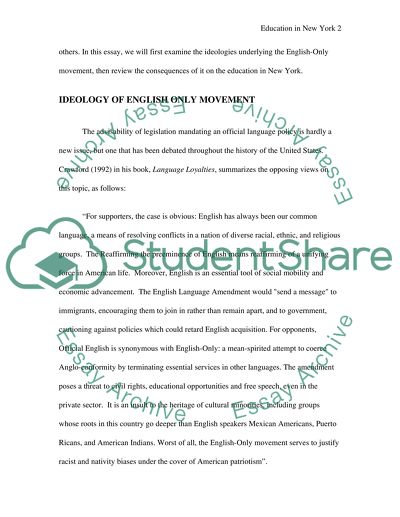Cite this document
(“English Only Movement in New York State Essay Example | Topics and Well Written Essays - 2500 words”, n.d.)
Retrieved from https://studentshare.org/miscellaneous/1505278-english-only-movement-in-new-york-state
Retrieved from https://studentshare.org/miscellaneous/1505278-english-only-movement-in-new-york-state
(English Only Movement in New York State Essay Example | Topics and Well Written Essays - 2500 Words)
https://studentshare.org/miscellaneous/1505278-english-only-movement-in-new-york-state.
https://studentshare.org/miscellaneous/1505278-english-only-movement-in-new-york-state.
“English Only Movement in New York State Essay Example | Topics and Well Written Essays - 2500 Words”, n.d. https://studentshare.org/miscellaneous/1505278-english-only-movement-in-new-york-state.


